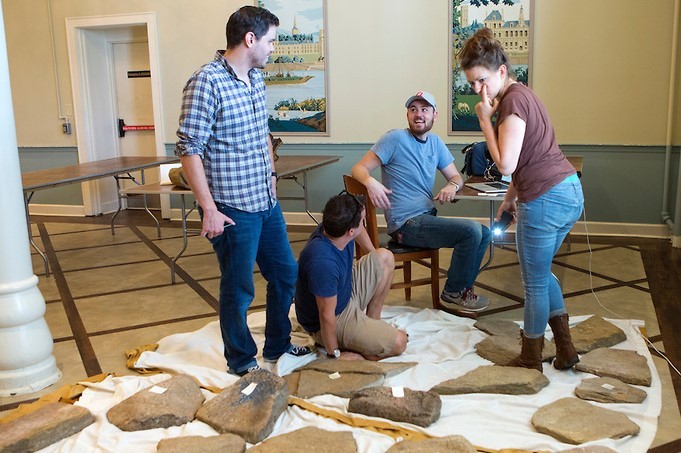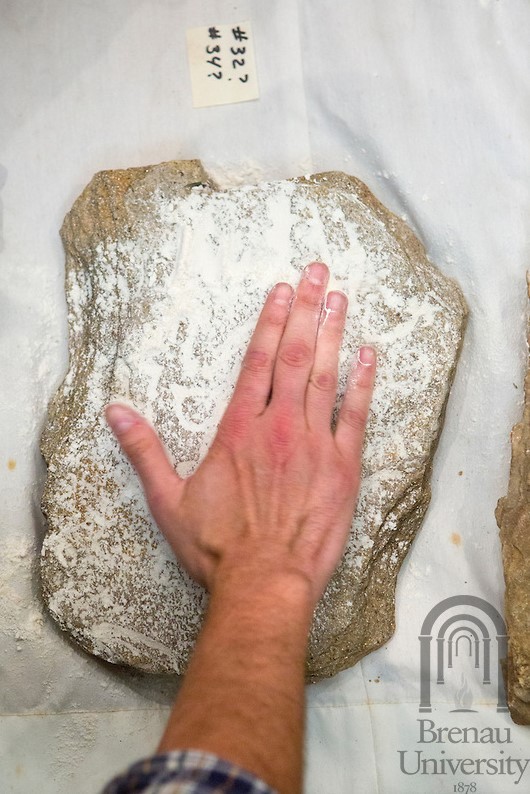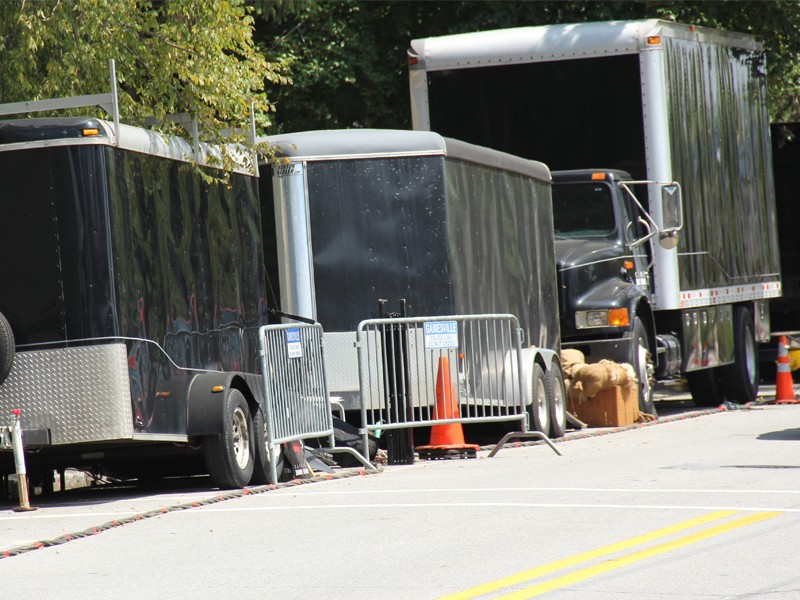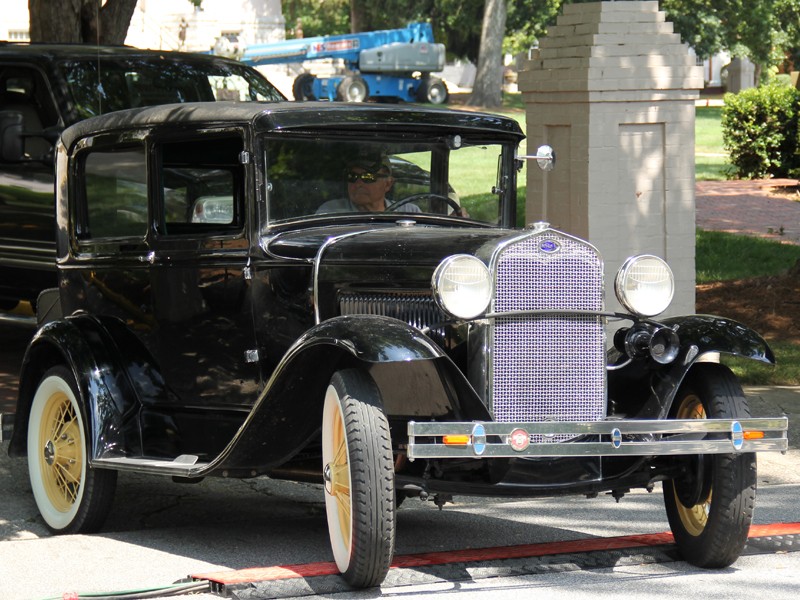GAINESVILLE — When the History Channel airs its nationally broadcast two-hour special Monday night dealing with one of America’s greatest and most perplexing mysteries, Brenau University’s Gainesville historic campus will be prominently featured.
Roanoke: Search for the Lost Colony premieres at 9 p.m. on Monday, Oct. 26. The two-hour special explores the yet-to-be-satisfactorily-explained disappearance of early English settlers off the coast of North Carolina in the late 1500s. However, a centerpiece of the story will be Brenau’s acquisition about 80 years ago of a series of large rocks with hand-carved inscriptions that purport to be the key to unlocking the mystery of themissing colonists.
Brenau and others refer to the collection of artifacts as “The Dare Stones,” named for Eleanor Dare, the daughter of the founder of the colony and the mother of Virginia Dare, often described in American history as the first child born to English settlers on the North American continent.
Georgia filmmaker Brandon McCormick, who said he has long held a fascination for the story of the “lost colony” and the Dare Stones, developed, produced and directed the production, which is part documentary and part docu-drama. And, without revealing any details, he hinted that he believes Brenau’s collection of artifacts might help solve the 16th century cold case.
“I think we’ve found some exceptional things,” McCormick said.
A full-scale film crew – including dozens of technicians, 1930s-era-clad actors, trucks and trailers, boom crane, cameras, lights, vintage automobiles and other equipment – encamped around the front lawn of Brenau’s historic campus in July to to shoot some docu-drama sequences related to Brenau’s acquisition of the stones and the national publicity that set off a firestorm of controversy about their authenticity.
The saga of the Dare Stones begins in 1937 in Depression-era Georgia. A California man walked into the history department of Emory University in Atlanta with a 21-pound chunk of quartzite that he says he unearthed while vacationing near the coast of North Carolina. Detailed writing was chiseled into both sides of the rock. Historians at the university, including Haywood Pearce Jr., initially concluded the writing to be Elizabethan-era English.
Although Emory was not interested in following up, they gave Pearce permission to take the stone to his father, Haywood Pearce Sr., president of Brenau where Pearce Jr. also held a position as vice president. Brenau was interested. Not only did the institution acquire the first stone, it also offered a reward for any other similar stones that anyone might have. As a result, that opened the door for Brenau’s acquisition of dozens of rocks with similar carvings.
Brenau’s due diligence on the authenticity of the stones, which including assessments by three of the most prominent historians in the United States, provided great credence for the serial narrative on the stones that described in detail a strange odyssey of the colonists from coastal North Carolina to Northeast Georgia. All of that, however, came unraveled with a 1940 article in the Saturday Evening Post that essentially took the positions that all of the stones were fakes.
Following that article, the stones virtually disappeared from the public consciousness throughout World War II. Pearce Sr. died in 1944 and Pearce Jr. after returning from the war moved on to other pursuits. However, interest in them continues to emerge from time to time.
Retired Brenau history professor Jim Southerland, who became the de facto Dare Stones expert at the university starting with a television production that came to town in the early 1970s, says that he is interested in seeing what has McCormick and his team so excited. Southerland, who along with others at Brenau participated in the research and planning for aspects of the production, said he still believes the first stone could be legitimate. Over the years, he said he has grown more and more convinced that the historic value of the whole collection is to validate one of the most inventive scams of the Great Depression.
“Either way, the stones are important artifacts of American history,” he said. “Of course, they would be extremely important if we could prove that the first stone originated in the 16th century.”
A preview of Roanoke: Search for the Lost Colony is available at the following link: http://www.history.com/shows/roanoke-search-for-the-lost-colony
For more information on the Dare Stones go to http://www.brenau.edu/darestones













